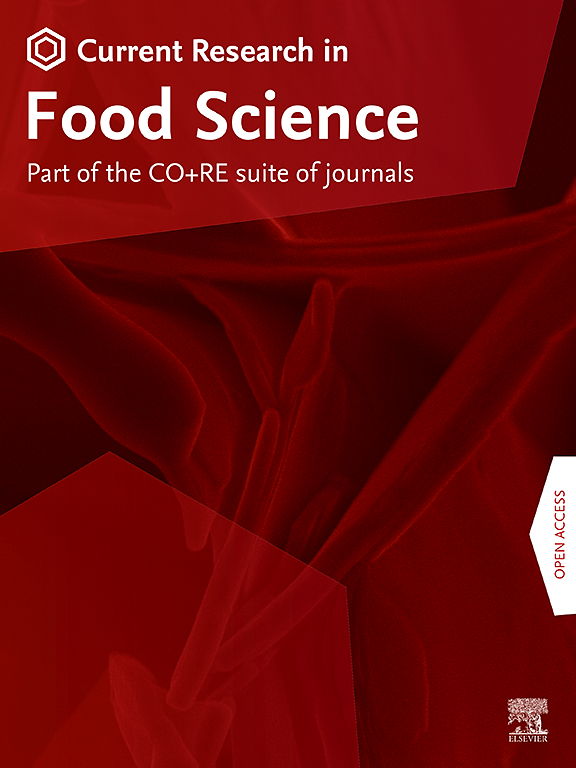Perceptual interactions of key aroma compounds in Fu brick tea: Odor threshold, sensory, and E-nose analysis
IF 6.2
2区 农林科学
Q1 FOOD SCIENCE & TECHNOLOGY
引用次数: 0
Abstract
While extensive research has focused on the flavor of Fu brick tea (FBT), the perceptual interactions among its aromatic components remain unclear. To address this, twenty representative aroma compounds were selected from FBT to determine their thresholds and evaluate their interactions by analyzing threshold changes before and after mixing. The results revealed discrepancies between the determined thresholds and literature values, particularly for α-terpineol, methyl heptenone, and geranylacetone, which demonstrated ratios of 73.54, 6.62, and 6.41, respectively. Mixtures with similar aromas or structures exhibited synergy, whereas those with differing aromas or structures displayed masking effects. Additionally, the odor compound (E)-nerolidol was added to the tea infusion at a concentration below its threshold level to investigate its impact on the overall aroma perception of FBT through sensory analysis and electronic nose assessments. The findings indicated that sub-threshold compounds could significantly influence the overall aroma profile of FBT.

求助全文
约1分钟内获得全文
求助全文
来源期刊

Current Research in Food Science
Agricultural and Biological Sciences-Food Science
CiteScore
7.40
自引率
3.20%
发文量
232
审稿时长
84 days
期刊介绍:
Current Research in Food Science is an international peer-reviewed journal dedicated to advancing the breadth of knowledge in the field of food science. It serves as a platform for publishing original research articles and short communications that encompass a wide array of topics, including food chemistry, physics, microbiology, nutrition, nutraceuticals, process and package engineering, materials science, food sustainability, and food security. By covering these diverse areas, the journal aims to provide a comprehensive source of the latest scientific findings and technological advancements that are shaping the future of the food industry. The journal's scope is designed to address the multidisciplinary nature of food science, reflecting its commitment to promoting innovation and ensuring the safety and quality of the food supply.
 求助内容:
求助内容: 应助结果提醒方式:
应助结果提醒方式:


